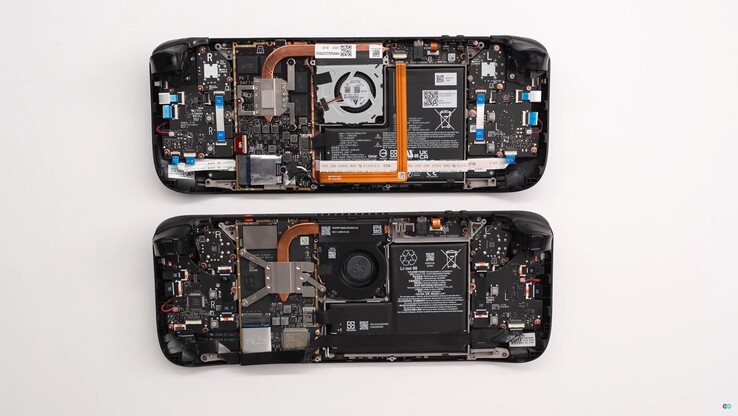On Thursday evening, Valve surprisingly announced its Steam Deck OLED. Although the gaming handheld doesn't offer more power than its predecessor, it does have a slightly larger 7.4-inch OLED panel with a peak brightness of 1,000 nits, a 25% larger battery and numerous smaller upgrades.
YouTuber Dave2D has already been able to test the gaming handheld and compare it with its direct predecessor. He shows that the advantages of the modernized 6 nm processor, larger battery and revised cooling system are definitely noticeable because the Steam Deck OLED runs around 2 decibels quieter and 5 degrees cooler under load than its predecessor. The battery lasts longer in all games tested: in demanding titles such as Cyberpunk 2077 or Control, the OLED model has to be plugged in after just over two hours, but also lasts over 20 minutes longer under load.
In the case of less demanding titles such as Dead Cells, a runtime of eight hours is certainly possible, around an hour and a half more than before. Torx screws make opening the housing easier. The internal design of the gaming handheld is similar to its predecessor, but Valve has updated most of the components and installed a slightly larger, quieter fan.
Valve is sticking with a single copper heatpipe, which should be enough as the chip runs at a maximum TDP of 15 watts. The 6 nm "Sephiroth" SoC has Valve branding, but hardly differs from the older 7 nm version. The 50 Wh battery is slightly larger and thus cannot simply be installed in the older Steam Deck.




















